RAD Hewer M37 Miniature Version
CATEGORY: Version
SKU: 80.GOR.04.02.004.000
Estimated market value:
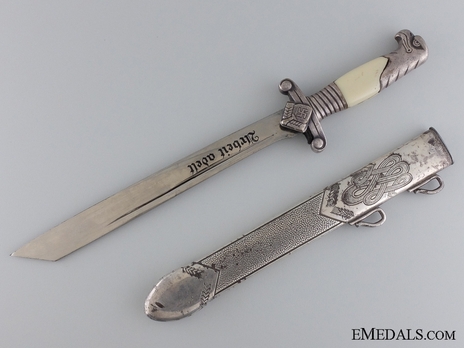
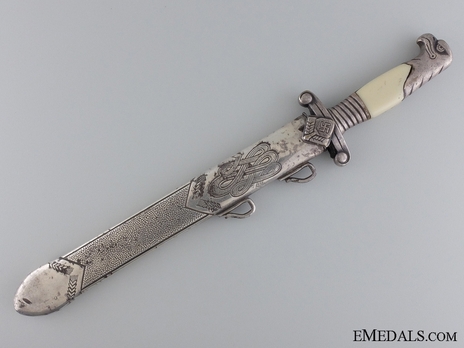
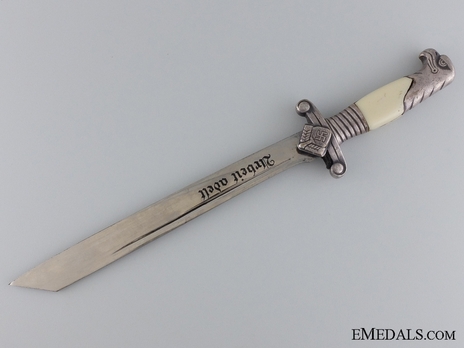
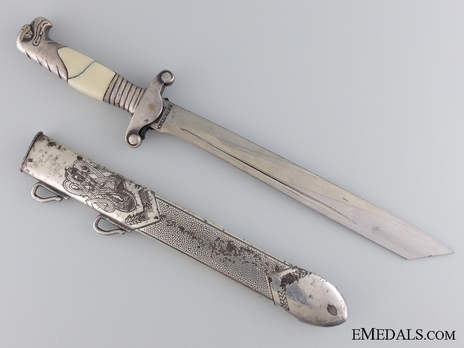
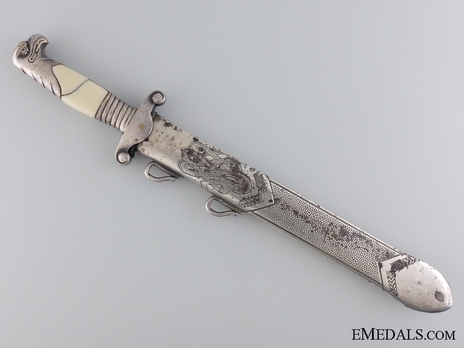
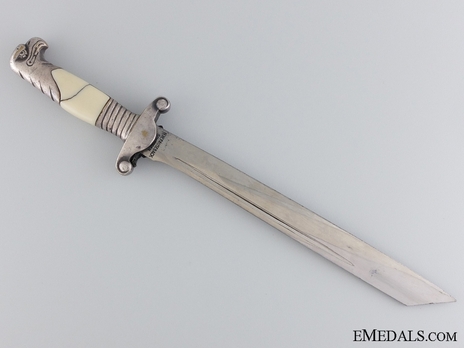
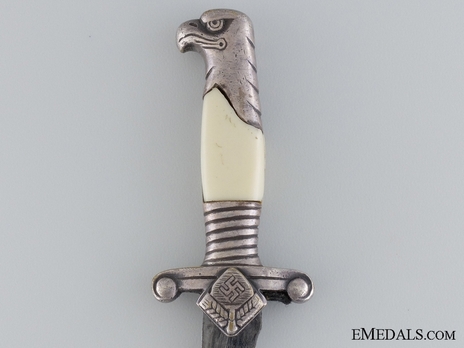
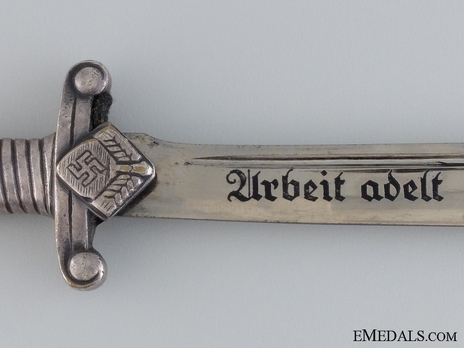
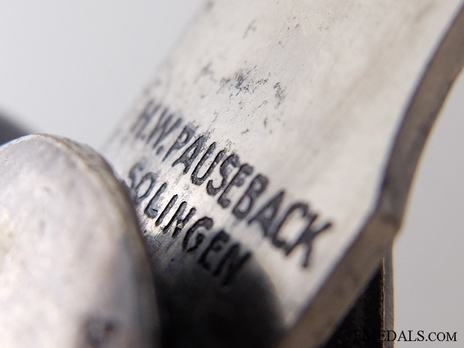
Estimated market value:
A Miniature RAD Leader's Dagger by H.W. Pauseback - measures 201 mm in length with the scabbard on, featuring a 130 mm nickel-plated steel blade, magnetic, fullers on both sides, with unsharpened edges, remaining bright and crisp, and having a very sharp tip. The obverse of the blade is engraved with the inscription "Arbeit adelt", while the blade's reverse ricasso is maker marked "H.W. PAUSEBACK SOLINGEN". It retains its crossgraining, with very faint scratches overall, common to extraction and return to the scabbard. Only half of the black felt washer remains. Aluminum crossguard with the RAD insignia, maintaining most of its original detail, the handle in aluminum with embedded ivory-coloured celluloid plates, exhibiting crazing in the reverse plate. It is finished with an eagle's head as the pommel, exhibiting light contact from active use, the opener measuring 191 mm in length. The scabbard is nickel-plated steel, magnetic, with the RAD looped-ornate design at the open end and RAD sheaves flanking the nicely pebbled central portion on both sides, with two steel dagger hanger loops affixed to the side, free of dents, light contact and gilt wear, the scabbard measuring 139 mm. Better than very fine.
The RAD (Reichsarbeitsdienst = Reich Labour Service) was officially established on June 26, 1935 as the sole, and compulsory, labour service of Germany. Its purposes were to help the economy, curb unemployment, and indoctrinate its members with the NSDAP ideology, as well as play its part in militarising the German population.
The FAD (Freiwilliger Arbeitsdienst = Voluntary Labour Service) was the precursor of the RAD in the early 1930s. Official uniform regulations were first introduced on October 1, 1933, with modifications made in July 1934. It is also known as NSAD (Nationalsozialistischer Arbeitsdienst = National Socialist Labour Service).
The earliest uniforms were a not entirely successful attempt at standardisation. They gave way to a second wave of FAD uniforms that, when the RAD was established, experienced no significant changes.
The only sidearm specific to the RAD is the so-called “Haumesser” (hewer). It came in two main versions, the 1934 version and the 1937 version.
The first version was introduced on August 16, 1934 for Officers and Senior NCOs (Non-Commissioned Officers), ranks Truppführer and above. It was worn on a hanger suspended from the belt on the left side. Initially, there was no standardisation yet, so very early specimens may deviate somewhat from the later standard design.
The hewer has a single-edged bolo-type forged steel blade. The weapon is 40cm long and weighs approx. 540 grams. It has a groove on the upper edge and, on the obverse, an inscription underneath, which reads: “Arbeit adelt” (labour ennobles). On the reverse, near the cross guard, the blade features the RAD inspection mark and, below that, the maker mark. The grip is made of stag horn and the metal parts of the hilt are in either nickel-silver or nickel-plated steel.
The scabbard has a black enamel paint finish and nickel-plated steel fittings at the top and bottom. The bottom design features the RAD emblem.
With the introduction of the 1937 version on December 21, 1937, the 1934 version became the NCO/EM (Non-Commissioned Officers/Enlisted Men) ranks version, while the 1937 version was worn by Officer and General ranks. It was similar to the 1934 version in most aspects, but has a few distinct changes as well. At 39cm long, it has almost the same length as the 1934 version, but only weighs about 255 grams. The metal parts of the hilt are gold-coloured for General ranks. For Officer ranks, they were initially in matte silver-plate, so-called “Altsilber” (old silver), but were later changed to a natural finished aluminum colour. It also has simulated ivory grip-plates. The pommel of the 1934 version is just a very crude rendering of an eagle’s head, whereas the 1937 version shows a lot more detail. Another detail of the 1937 version is a spiral ferrule leading down to the crossguard, and the RAD emblem on the obverse of the langet.
The scabbard has a matte silver-plate finish and a burnished pebbled central area. The lower part no longer features the RAD emblem.
Minor variations of both the 1934 and 1937 version are known to exist. Wearing of all RAD hewers was forbidden on February 17, 1944.

Comments
Sign in to comment and reply.


Scroll Top